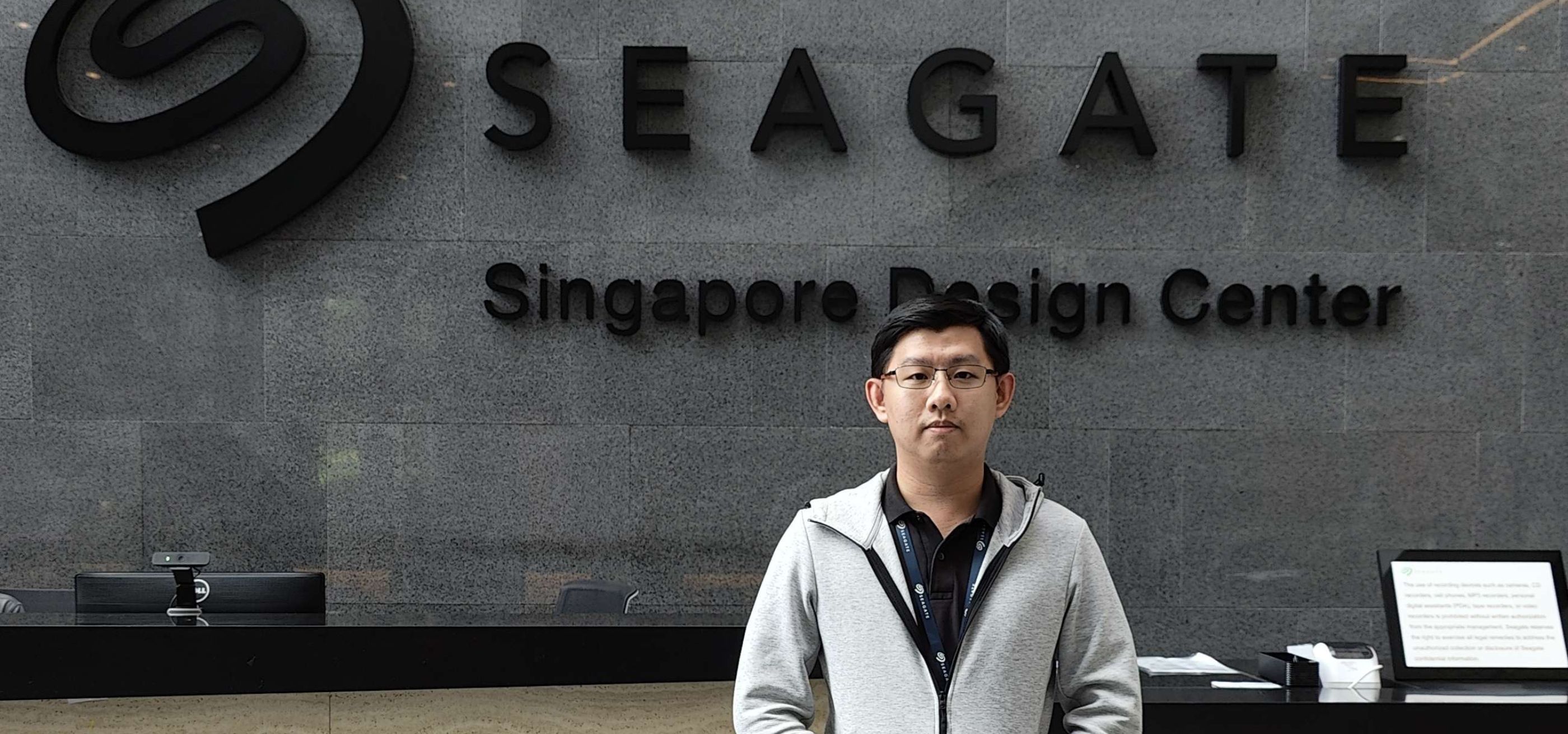For someone who loves working on both hardware and software technology, carving out a career as a firmware engineer at Seagate has been a perfect fit for graduate Toh Yu Xing. Yu Xing joined Seagate fresh after completing his BEng in Systems Engineering (ElectroMechanical Systems) — now renamed as BEng in Mechatronics Systems (METS).
Yu Xing’s interest in engineering was first sparked as a teenager. He had studied electronics, computer, and communications engineering at Nanyang Polytechnic (NYP), with a specialization in embedded systems design. During his polytechnic freshman year, Yu Xing’s first programming project was to create a tic-tac-toe game. He managed to code a player-versus-artificial-intelligence simulation that was set on hard mode. Successfully developing the game gave Yu Xing a sense of accomplishment that stuck with him and inspired him to do more. He also did a lot of hands-on work with microprocessors during this time, which fuelled his interest in engineering hardware and understanding how things work.
While researching higher education options to pursue after polytechnic, SIT-DigiPen (Singapore)’s METS program caught Yu Xing’s attention. The program structure was similar to what he had previously experienced at NYP, plus he was drawn to the applied-learning curriculum and Overseas Immersion Programme. Yu Xing applied to METS without hesitation. As part of the curriculum, Yu Xing had the opportunity to do a student internship with ST Engineering Land Systems, where he worked on an autonomous bus project. During that internship, Yu Xing says he discovered that he entered a “flow state” whenever he worked with C/C++ programming on embedded systems. This experience gave Yu Xing a clear idea of the type of job he was looking for, and he found a suitable role at Seagate upon graduation in 2021.
In order to appreciate Yu Xing’s role as a firmware engineer, he says it’s best to first understand what firmware is. “In layman’s terms, firmware makes electronic products do things,” Yu Xing explains. “Firmware is specialized software that’s not meant to be changed or updated often, if ever. Firmware engineers are thus the ones who work with both hardware and software components to write the algorithms or rules that tell a device how to behave.”
Yu Xing’s day-to-day work varies, depending on the role he is currently in. His team practices a system where roles and responsibilities are rotated, so he might be a scrum master, assistant scrum master, bug triage, or developer at any given time. Scrum masters and assistant scrum masters get updates on tickets the team is working on, helping to troubleshoot any problems to ensure a successful sprint. Bug triages are responsible for resolving any bug tickets that get assigned to the team, while developers spend their time working on tickets that are planned for the current sprint. “The scale and complexity that comes with creating a product is immense, but the multidisciplinary approach of the METS program has helped me to overcome this,” Yu Xing says. “My background helps me to understand the different stages of work required throughout the product life cycle and has given me the utmost appreciation of how it all comes together.”
Even though Yu Xing has been with his company for a few years, he still enjoys it, as there are constantly new things to learn and master. “At Seagate, I’m given the opportunity to develop new features that will go into both existing and new products,” Yu Xing says. “When people think of Seagate, they normally think of our hard disk drives that have been the backbone of the world’s digital infrastructure for so long. The technology that lies in it is the unsung hero that drives the products, and it makes me excited that countless people are going to utilize these innovations over time.”
